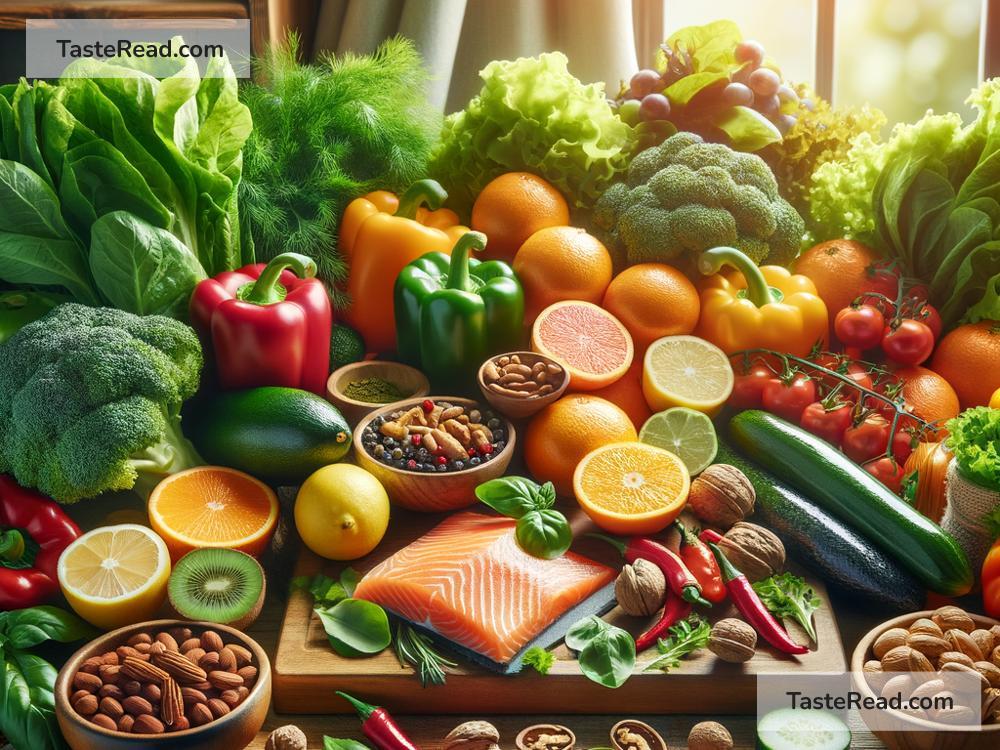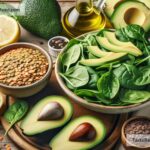Foods That Reduce the Risk of Glaucoma
Glaucoma is a condition that affects the eyes, and it can lead to vision loss if not treated properly. It happens when the pressure inside the eye gets too high, damaging the optic nerve, which connects your eye to your brain. While genetics and age play a big role in whether someone gets glaucoma, your diet may also make a difference. Certain foods can promote eye health and might help lower the risk of glaucoma. In this blog, we’ll explain what these foods are and how they can help—all in simple, easy-to-understand language.
What Is Glaucoma?
Before diving into foods, let’s quickly explain glaucoma. Your eyes have fluid inside them that usually drains out to keep your eye pressure at a safe level. In people with glaucoma, this fluid doesn’t drain properly, leading to a buildup of pressure. Over time, this pressure can damage the optic nerve, which is crucial for vision.
There are medications and surgeries to treat glaucoma, but prevention is always better than cure. Eating eye-friendly foods may help support healthy eyes and lower your risk of developing glaucoma or other eye problems over time.
How Does Food Help?
Certain nutrients in food have been shown to keep the optic nerve healthy and reduce pressure in the eyes. Antioxidants, vitamins, and minerals play a major role in fighting inflammation and improving blood flow to the eyes, two key factors in glaucoma prevention.
Below, we’ll list some of the best foods for reducing the risk of glaucoma and explain how they work to protect your eyes.
1. Leafy Green Vegetables
Spinach, kale, collard greens, and other leafy greens are rich in vitamins like A, C, and E, as well as lutein and zeaxanthin—antioxidants that promote eye health. These greens are known for improving blood flow and reducing oxidative stress, which can harm the optic nerve over time.
Studies have shown that people who eat more leafy greens have a lower risk of glaucoma, possibly because they contain nitrates. Nitrates help improve circulation, which supports healthy eye pressure levels.
How to eat them: Add spinach to smoothies, salads, or scrambled eggs. Kale chips are another tasty option!
2. Fruits High in Vitamin C
Vitamin C is a powerful antioxidant that fights damage caused by free radicals (unstable molecules that can harm cells). Citrus fruits like oranges, grapefruits, lemons, and limes are great sources of Vitamin C, as are strawberries, kiwi, and bell peppers.
Vitamin C not only protects the optic nerve but also helps maintain the health of blood vessels in the eye, keeping fluid drainage normal and reducing pressure.
How to eat them: Snack on an orange, add fresh fruit to your yogurt, or toss strawberries into a salad.
3. Nuts and Seeds
Almonds, walnuts, and flaxseeds are loaded with Vitamin E and omega-3 fatty acids. Vitamin E helps repair damaged cells in the eye and protects against oxidative stress. Omega-3 fatty acids, found in fatty fish and seeds, are known for reducing inflammation and supporting eye health. In particular, omega-3s may help lower intraocular pressure—a key factor in glaucoma prevention.
How to eat them: Sprinkle chopped nuts on oatmeal, salads, or yogurt. Enjoy a handful of nuts as a healthy snack.
4. Fish Rich in Omega-3 Fatty Acids
Fatty fish like salmon, mackerel, tuna, and sardines are rich in omega-3 fatty acids, just like nuts and seeds. These healthy fats prevent inflammation in the eye and support proper fluid drainage.
Studies suggest that eating fish regularly can reduce the risk of glaucoma and many other eye conditions. Omega-3 fatty acids also help your eyes stay hydrated, which is important for overall vision health.
How to eat them: Grill or bake salmon for dinner, or make a tuna salad sandwich for lunch.
5. Carrots and Sweet Potatoes
Carrots and sweet potatoes are packed with beta-carotene, a nutrient that converts into Vitamin A in the body. Vitamin A is essential for keeping the optic nerve healthy and supporting sharp vision. Beta-carotene also helps protect the eye tissues from damage caused by harmful UV rays.
How to eat them: Add shredded carrots to salads or soups. Roast sweet potatoes as a side dish or snack.
6. Whole Grains
Whole grains like quinoa, brown rice, oats, and whole wheat bread are rich in magnesium, which plays a role in regulating blood flow and keeping eye pressure at a healthy level. Magnesium also supports nerve function, including the optic nerve critical for vision.
How to eat them: Replace white rice with quinoa or brown rice. Opt for oatmeal instead of sugary cereals.
7. Green Tea
Green tea is a drink, not a food, but it’s worth mentioning! It contains antioxidants known as catechins, which protect the optic nerve and may reduce pressure inside the eye. Drinking green tea regularly may help prevent glaucoma and promote overall eye health.
How to enjoy it: Replace coffee or sugary drinks with a cup of green tea. Add a slice of lemon for flavor.
Final Thoughts
While there’s no guaranteed way to prevent glaucoma, eating a healthy diet can go a long way in preserving your vision. Leafy greens, fruits, nuts, fish, and other nutrient-rich foods provide antioxidants, vitamins, and minerals that help protect your eyes. Pair this diet with regular eye exams and other healthy habits, like exercise, to give your eyes the best chance to stay healthy.
Remember, early detection is key with glaucoma, so if you notice any changes in your vision—such as blurry or tunnel vision—see an eye doctor right away. In the meantime, load up your plate with these eye-friendly foods. Your eyes will thank you!


